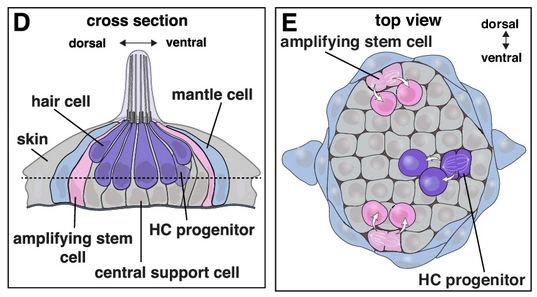By Najim M.
Accessibility is making sure everyone—whether disabled or abled—has easy access around the workplace as well as its facilities. The concept of accessibility at work goes far beyond physical access and involves so much more.
Offering jobs for people with disabilities can be tricky and tedious on the part of the employer as well as the employee, especially when the accessibility at work isn’t properly managed.
Not all disabilities are immediately visible.
It is advantageous for a business to promote equity, tolerance, and management of disability in the workplace. A 2018 study by Accenture—in partnership with the AAPD (American Association of People with Disabilities) and Disability:IN—reported that companies embracing practices that support and encourage individuals with disabilities in the workplace saw their bottom line improve. Strong diversity, equity, and inclusion (DEI) practices were associated with a 28 percent increase in revenue, double the net income, and a 30 percent boost in economic profit margin, compared with their peer companies that scored lower on DEI practices.
Carrefour, an international retail group that specializes in large-scale distributions with over 15,000 thousand stores worldwide, and holds the spot of the largest retailing company in Europe, has several awards for their initiative to include workers who are disabled.
Developing an accessible workplace is important as well as beneficial to your business because of the opportunity it brings in terms of access to talent and employee retention. This is due to the message of disability inclusion promoted by the company.
When we talk about accessibility in the workplace, as much as we’re talking about convenience, structure, and technology, we’re also talking about character, communication, accommodation, and sustained support in the workplace.
Understanding the three dimensions of accessibility in the workplace will help you make the necessary adjustments or take a better attitude toward an employee who is disabled.
Physical Accessibility
This involves the physical and personal convenience of the staff, both able-bodied and disabled.
Though the advantages of accessibility extend beyond compliance, employers have to be acquainted with the requirements of the law under the Americans with Disabilities Act (ADA). ADA compliance in the workplace must be encouraged and carried out.
Access that must be provided includes:
Braille signage
wheelchair accessibility
necessary work equipment
special parking spaces
In some cases, offering part-time jobs for people who are disabled may be a way to prevent your employees from feeling physically or mentally overwhelmed.
Technological Accessibility
This emphasizes digital accessibility, especially as technology has become the bedrock of modern industry.
Lack of accessible technological facilities and tools in the workplace can hinder people with disabilities from performing to their best ability.
Accessibility in this area for those with hearing loss includes captioned phones and captioned video meetings, such as through AI-produced captions on Zoom.
Attitudinal Awareness
The trickiest to navigate of the three dimensions, the kind of mindset a person has affects the behavioral pattern of that person toward other people and concepts.
Wrong and discriminatory notions among employers and colleagues can negatively affect the working environment.
People with disabilities should be respected and allowed to thrive because of their value and contributions to the job.
Discrimination, gossip, backlash, pity, fear, downgrading, or undermining should not be tolerated.
When people with disabilities notice behavior like this they may be upset, lose confidence, and eventually leave the job. Focus on tolerance and accommodation as well as friendship to help the entire team grow and thrive.
Another way of bridging the gap between you as an employer and these people is by communication. Discuss disabilities with the aim of better management and facilitate training when needed to improve awareness among the staff.
Here are 10 ways that have been studied to help with accessibility at work:
Keep yourself updated on legislation regarding workplace accessibility.
Get professional advice on how best to improve the accessibility of your work environment. Some firms specialize in this, even down to office structure adaptability.
Pay attention to digital improvement. Large keyboards, voice recordings, screen enlargement apps, and other assistive technologies will go a long way in getting the job done by your disabled employees.
Accommodate disabled employees’ means of assistance, especially If it poses no threat to the general workplace.
Work toward training your employees on proper work behavior. Organize programs to teach them the necessary etiquette and encourage open communication.
Company policies should be reviewed, especially to make sure people with disabilities are fully supported.
Prepare your mind for inclusion. Don’t just think you can do it because it sounds nice and fair. Take your time to reason it out and understand the extent to which you can go at your level.
Take your applicant accessibility to the next level. Pass your message of value and accommodation by providing accessible technology on your hiring site.
Take note of your immediate needs and start from there. Don’t spread yourself too thin.
Remember that all disabilities are not visible. While some are physical they may be hidden such as hearing loss. Epilepsy, ADHD, PTSD, and other conditions should also be accommodated. For the person with a disability, self-advocacy will help your employer and colleagues make the appropriate accommodations.
It Takes Teamwork
Adapting to having disabled workers may seem a bit challenging but it’s a great step in embracing Inclusivity and taking your business up the productivity ladder. People are emotional and empathy is a great way to open the door of productive communication with one another. Just make sure you have a good and understanding team and you will be able to carry out the effective accessibility change your workplace needs.
Najim M. is the founder of My Disability Jobs, where this is adapted from. It is a website working to create a more fair workplace.







Before I discovered CART, I often felt left out, despite being physically present. This gap in awareness affects thousands of people. That’s why I speak up, because access delayed is opportunity denied.